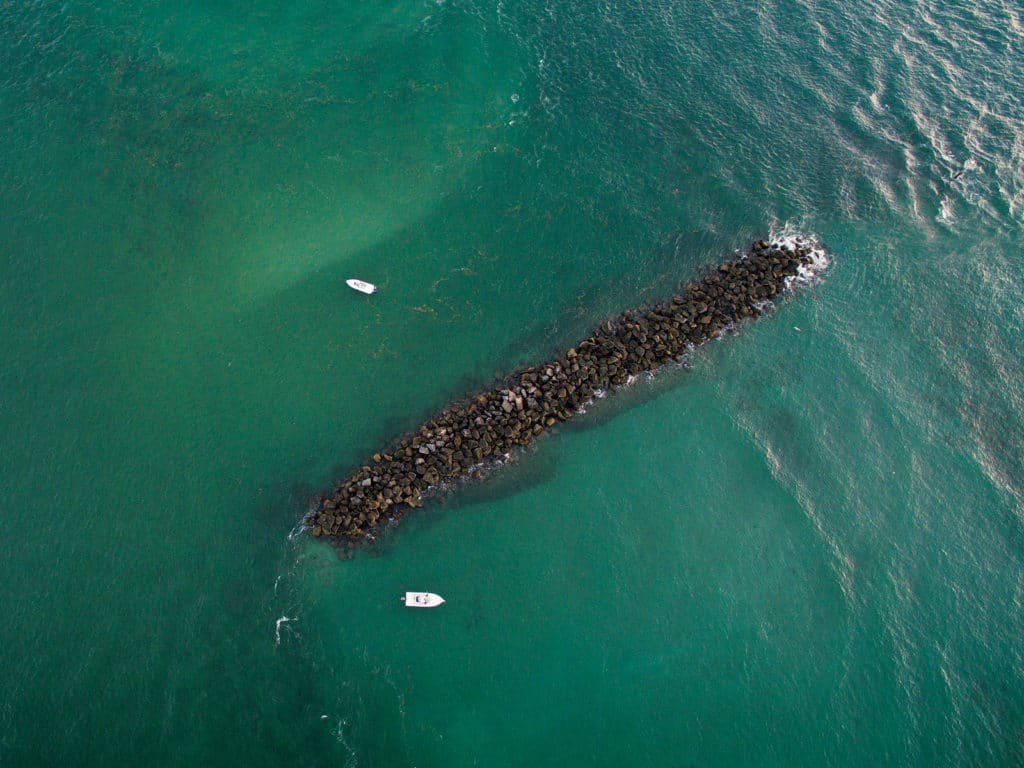
If inlets and passes are the main thoroughfares for game fish to and from the ocean, jetties represent that one exit with all the restaurants. Rocky breakwaters are a veritable buffet table for species like striped bass, flounder and redfish. Even with pesky boat traffic, ocean swells and nearby shoals, these pervasive fishing structures remain popular for boat and shore fishermen. I went to five experts to learn how they avoid common jetty blunders and out-fish their close-quarter compatriots. In return, they supplied jetty fishing tips detailing how to fish jetties successfully.
Don’t Let Your Presentation Stray from the Rocks When Inlet Fishing
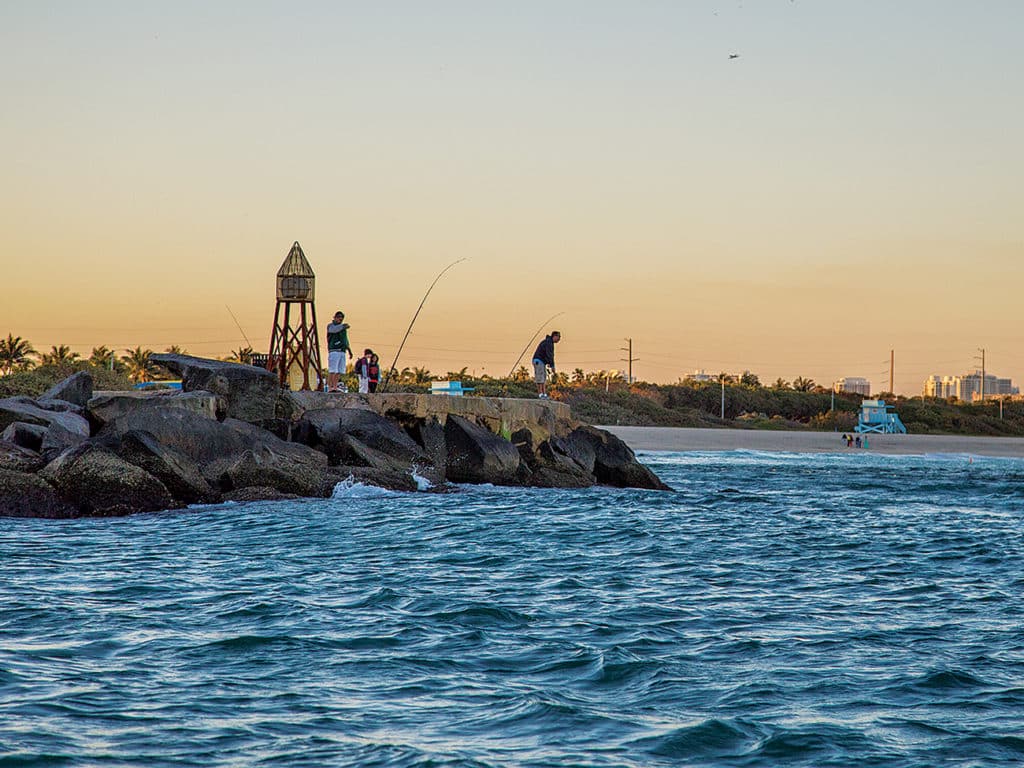
Capt. Alan Pereyra, of Topp Dogg Guide Service in Galveston, Texas, targets the jetties of the Galveston Ship Channel all year long for a variety of species. The Ship Channel is one of three cuts into the Galveston system, the other two being Rollover and San Luis passes.
“In the summer we’ll catch redfish, speckled trout, sheepshead, black drum, Spanish mackerel and sharks when jetty fishing,” he says. “My most important advice is to fish as close to the rocks as possible. The top trout and upper-slot redfish that win local tournaments all hang close to the rocks.”
Depending on the tide strength, Pereyra might use a kayak anchor in light current to hold the boat in place. “For heavy current,” he says, “I’ll drop a Danforth boat anchor 20 to 30 feet from rocks, then let [rode] out to position the back of the boat close to the rocks for my customers.”
Once at the rocks, he’ll use light setups with live shrimp for a natural presentation for his jetty fishing rigs. “I want the bait to flutter down toward the bottom as it flows with the current,” says Pereyra. “Crankbaits designed for bass and cast close to rocks work too, as long as they have a lip to dive down.”
Don’t Handcuff Yourself to a Single Bait Species When Jetty Fishing
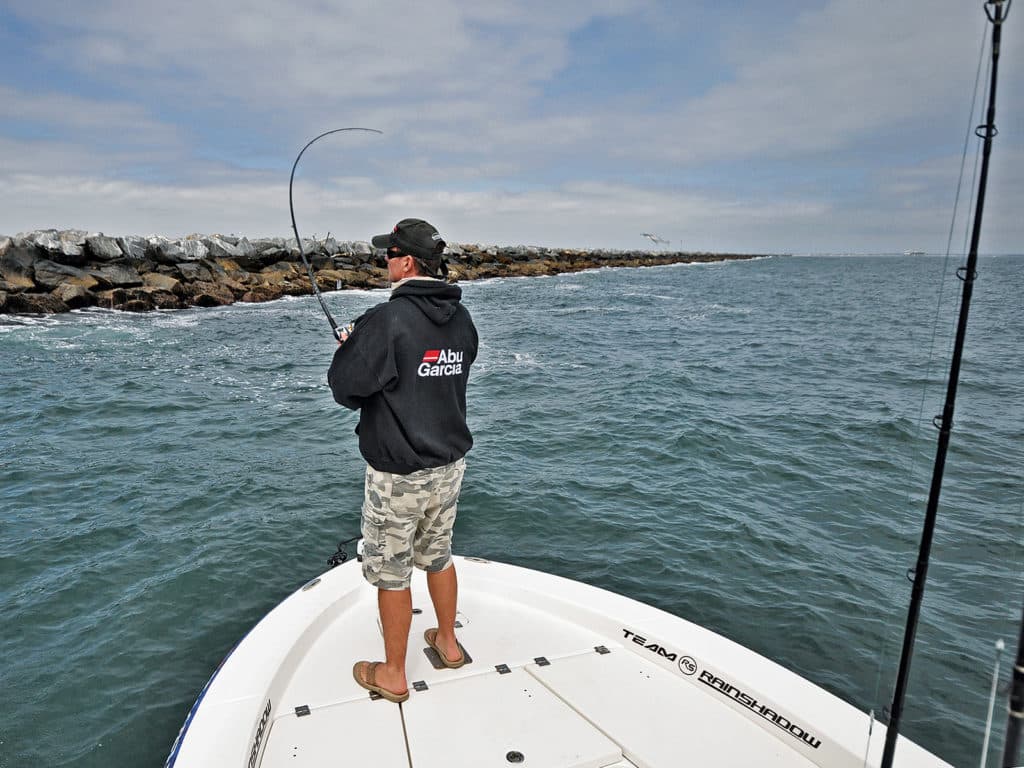
Having a variety of baitfish in the livewell can be paramount to enticing the bite, says Capt. Jared Simonetti of Clearwater, Florida. He regularly fishes the passes from Anclote Key to the Skyway Bridge for snook in the summer months.
“Snook stage at jetty locations closer to land, all the way to the tip of the jetty, depending on the tide,” he says. “The incoming tide brings in the clear Gulf water, while the outgoing tide often carries dirty water. The best tide for jetty fishing is a tide that’s moving— slack tide turns off the bite”
When fishing clean water, Simonetti prefers large, lively threadfin herring and scaled sardines as his best baits for jetty fishing.
“During the incoming tide, I’ll use leader as light as 30-pound-test and free-line the baits along the jetty,” he says. “I cast up-current, let the bait pass through the strike zone on top, and then recast. I don’t want to drag the baits behind the boat, and I’ll even replace threadfins with new ones after a couple of casts.”
On the outgoing tide, he switches to grunts and pinfish in the dirty water.
“These baits I send to the bottom using weighted rigs with heavier 50- to 60-pound leader,” he says. Simonetti wants the resilient baits to get down to the staging snook when the water visibility drops.
Some of the Best Lures for Jetty Fishing are Jigs
“I call it the best rock pile on the coast,” says Capt. Trevor Smith of ProFishNC Charters, referencing Masonboro Inlet’s pair of jetties. The Wrightsville, North Carolina, captain has a unique technique for inlet fishing when he doesn’t want to mess with live bait or anchoring.
“On the last two hours of the outgoing, when the bait dumps out with the backwater tide, I’ll use 3- to 4-ounce 5-inch-long metal jigs,” says Smith. “Twenty feet off the rocks, in waters from 28 to 35 feet, I’ll work that jig near the bottom, and the redfish and cobia pick it up.”
Red drum and cobia are available in the springtime, with May to June hot for cobia, says Smith. August to October brings an influx of bull reds.
“I use 4-ounce jigs with UV glow and single hooks or 4X trebles,” he says, “paired with 60-pound braid and 40- to 60-pound fluorocarbon leader.” Metal jigs aren’t just for offshore; utilize them at favorite inlets.
Don’t Fish the Same Spot Along the Inlet
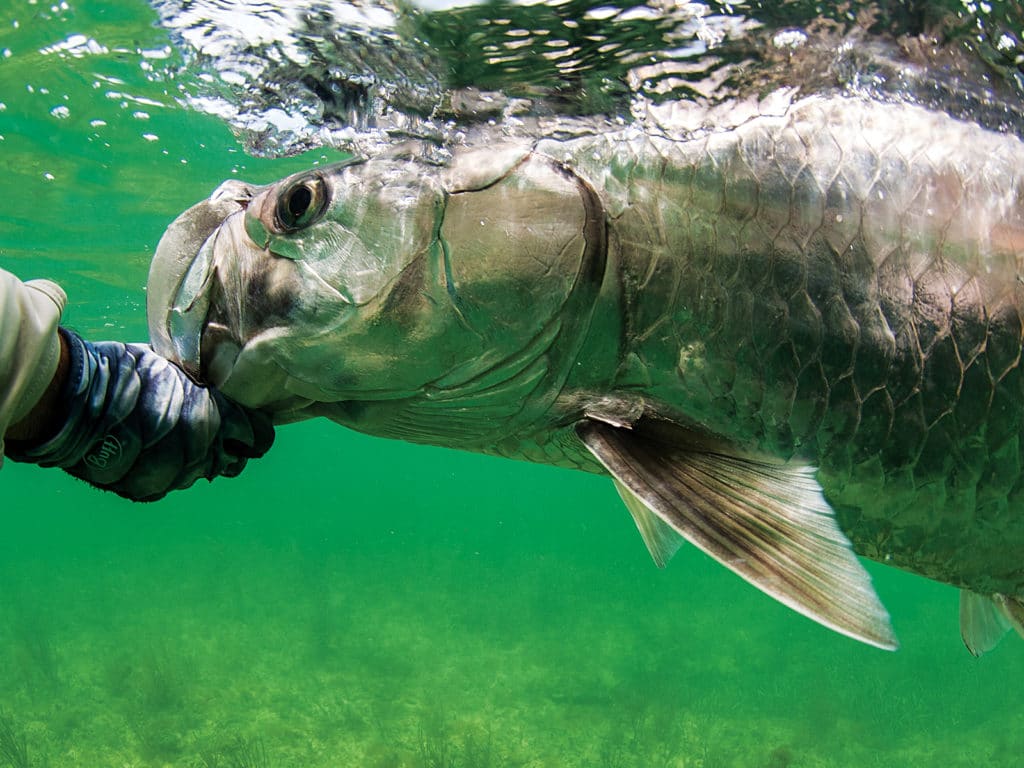
Capt. Dave Kostyo, based in North Miami, works the tides around South Florida’s Government Cut and Haulover Inlet for tarpon most months of the year.
“The outgoing is my best tide for jetty fishing,” says Kostyo. “Cast toward the jetties while drifting parallel. Raise the rod tip slowly and then lower it down to impart action on the bait. Make sure to keep the bait near the bottom.”
Kostyo doesn’t like to anchor, because doing so can drown his baits, and heavy wind and cargo-ship wakes can push boats toward the rocks. He fishes both sides of the jetty rocks but moves outside the cut onto the beach side when the tide really picks up.
“There’s much less current on the outside,” he says. “It’s much safer, and you can fish from the tip of the jetty down toward the beach.”
Top baits include blue runners, mullet and horse-size threadfin herring. When the bite stops at the inlets, he heads to the bridges of Biscayne Bay for the night bite.
Don’t Stop Fishing the Jetties When the Sun Goes Down
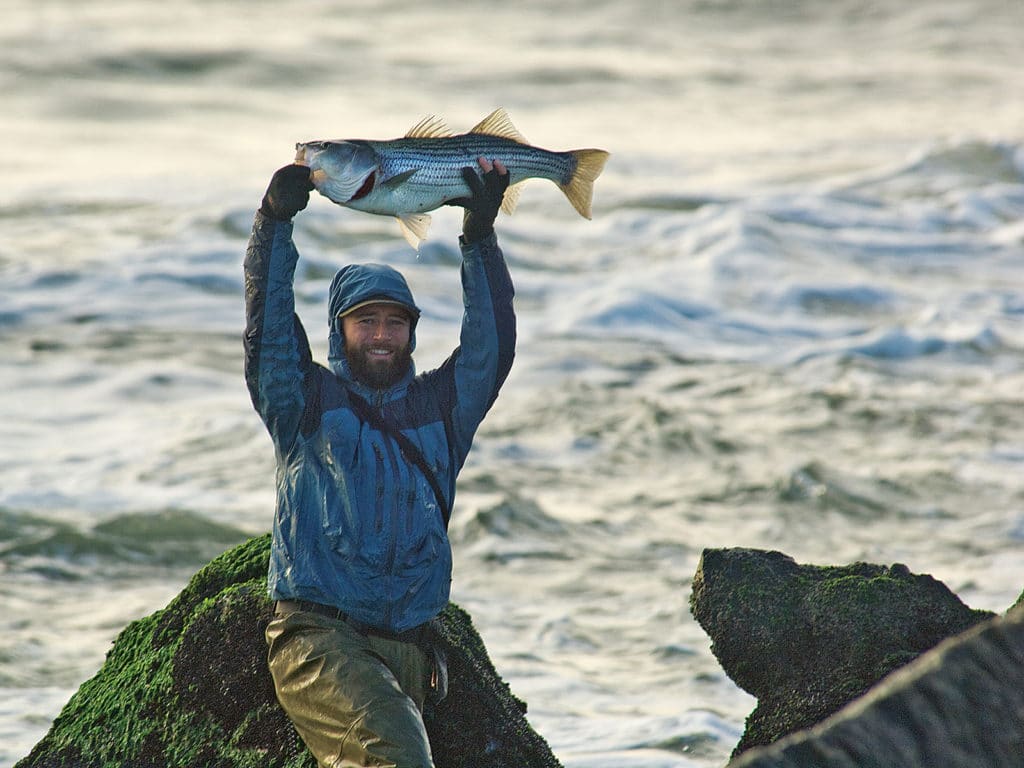
Delaware’s Inner Wall and Outer Wall skirt Cape Henlopen at the southern cape of Delaware Bay. The Harbor of Refuge Light sits atop the outer breakwater, while the East End Light marks the inner breakwater. Along with a set of rock outcroppings near the Outer Wall, called the Ice Breakers, the breakwaters provide abundant habitat for monster striped bass.
Capt. Chuck Cook, of First Light Charters in nearby Lewes, Delaware, heads to these hot spots when the moon shines bright at night. “Bluefish take over in the evening and morning hours, but it’s a 100 percent striped bass bite at night,” he says. “Before heading out, fish the area during the day to be familiar with your rocky surroundings.” Cook recognizes that stripers feed heavily at night, and odd hours are sometimes necessary to target them. He fishes parallel to the walls along a drop that’s 37 feet deep, but keeps his engine running to steer away from the rocks.
“Lures such as MirrOlures, Bombers or Berkley eels in dark colors show up best at night,” he explains. “A dark green pine tree shows better against a twilight skyline than a white birch. It’s the same effect with the water’s surface and moonlight at night.”
That’s right, some of the best lures for jetty fishing at night are painted in dark colors. It seems counterproductive, but the results speak for themselves.
Fish the Jetties First Before Fishing Other Nearshore Rocks
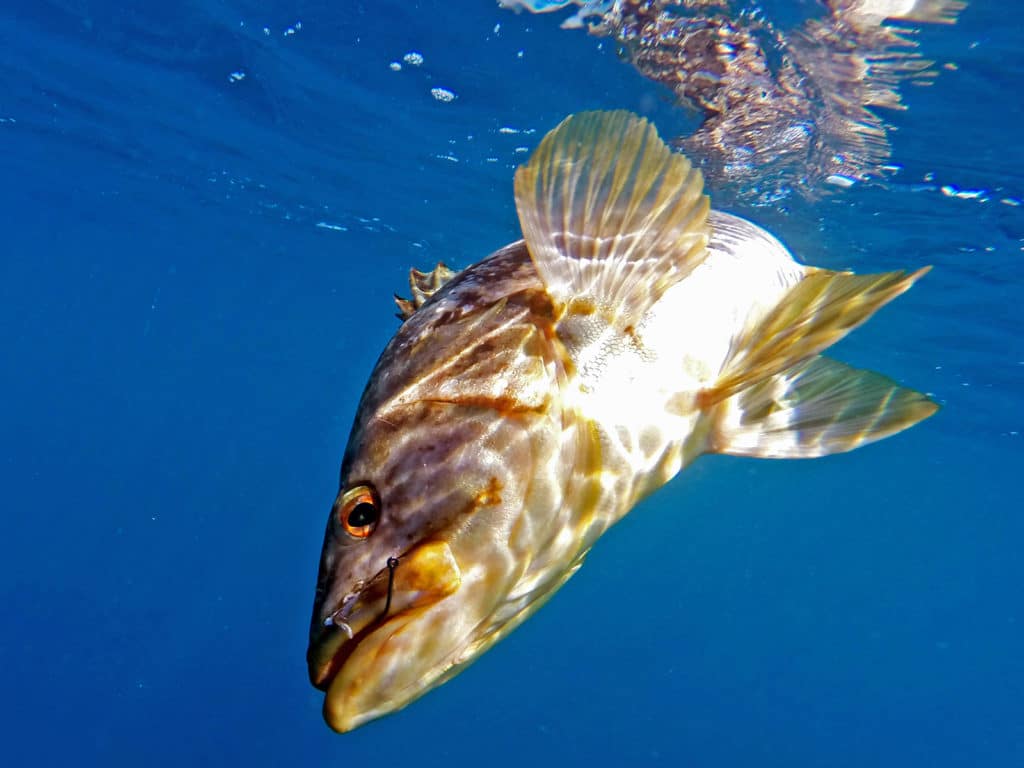
The San Diego Bay jetty is home to big calico bass, sand bass and halibut. Yet anglers run past the familiar rocks to nearby islands and beaches to target the same species.
“The best boat to fish the jetty is one with a trolling motor,” says Capt. Alan Clowers of San Diego. “Boat handling is vital to position oneself to get your lure in the right spot, tight to the rocks.”
Jetties are fish attractors, pure and simple, and Clowers casts red skirted jigs for the calicos.
“The sand bass will be outside the rocks,” he says. “Swimbaits or a sardine rigged to a Carolina rig works well. The halibut hanging with the sand bass prefer a live anchovy.”
If the jetty bite is slow, Clowers heads inside to the channels and back bays for bass, bonefish and shortfin corvina. You don’t have to run outside Mission and San Diego bays to find fish.








